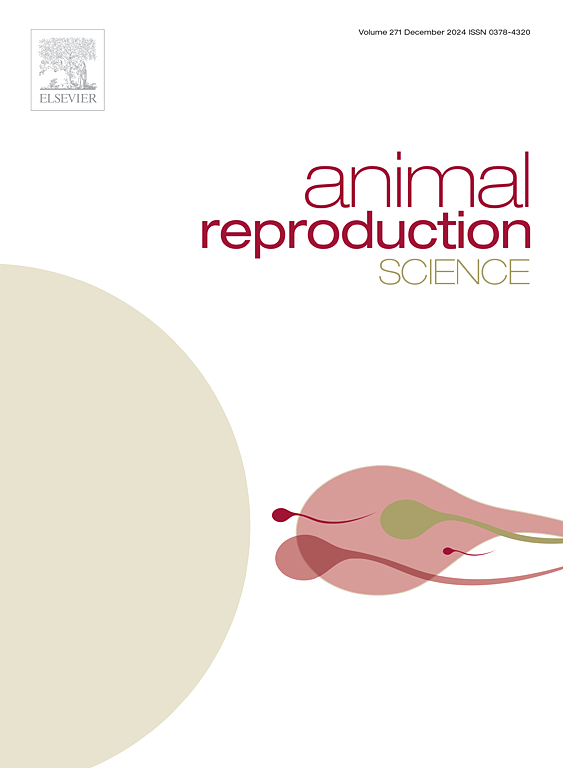Influence of different liquid nitrogen levels on bull sperm cryostorage and its impact on sperm quality
IF 2.2
2区 农林科学
Q1 AGRICULTURE, DAIRY & ANIMAL SCIENCE
引用次数: 0
Abstract
The study aimed to compare the impact of liquid nitrogen (LN2) levels within the storage dewar on sperm quality and investigate the effects of the nitrogen level on the sperm straws stored at the top or bottom of the semen racks. A total of 48 straws from 8 different bulls were used. Analyses were performed at three different LN2 levels within the dewar (30, 15, and 7 cm), and at each level, two straws (one from the top and one from the bottom of the rack) from each bull were used. Analyses included assessing mitochondrial membrane potential (MMP), plasma and acrosomal membrane integrity (PMAI), and sperm kinematics using CASA. Neither the evaluated nitrogen levels nor the straw storage location in the top or bottom goblet of the rack affected sperm quality. There were no differences in total and progressive motility or MMP and PMAI. The results obtained in this study show that, as long as the internal temperature in the dewar is maintained at −194 °C or below, even at the lowest evaluated liquid nitrogen level, there is no loss of sperm quality, regardless of the storage location of the straw in the rack.
不同液氮水平对公牛精子冷冻的影响及其对精子质量的影响
本研究旨在比较储存杜瓦瓶内液氮(LN2)水平对精子质量的影响,并研究氮气水平对储存在精液架顶部和底部的精子吸管的影响。共使用来自8头不同公牛的48根吸管。在杜瓦瓶内的三个不同LN2水平(30、15和7 cm)上进行分析,在每个水平上,使用每头牛的两根吸管(一根来自架子的顶部,一根来自架子的底部)。分析包括使用CASA评估线粒体膜电位(MMP)、血浆和顶体膜完整性(PMAI)以及精子运动学。所评估的氮水平和吸管在架子顶部或底部高脚杯中的储存位置都不影响精子质量。总运动和进行性运动或MMP和PMAI没有差异。本研究结果表明,只要杜瓦瓶内部温度保持在- 194℃或以下,即使是在最低评价的液氮水平下,无论吸管在机架中的储存位置如何,精子质量都不会下降。
本文章由计算机程序翻译,如有差异,请以英文原文为准。
求助全文
约1分钟内获得全文
求助全文
来源期刊

Animal Reproduction Science
农林科学-奶制品与动物科学
CiteScore
4.50
自引率
9.10%
发文量
136
审稿时长
54 days
期刊介绍:
Animal Reproduction Science publishes results from studies relating to reproduction and fertility in animals. This includes both fundamental research and applied studies, including management practices that increase our understanding of the biology and manipulation of reproduction. Manuscripts should go into depth in the mechanisms involved in the research reported, rather than a give a mere description of findings. The focus is on animals that are useful to humans including food- and fibre-producing; companion/recreational; captive; and endangered species including zoo animals, but excluding laboratory animals unless the results of the study provide new information that impacts the basic understanding of the biology or manipulation of reproduction.
The journal''s scope includes the study of reproductive physiology and endocrinology, reproductive cycles, natural and artificial control of reproduction, preservation and use of gametes and embryos, pregnancy and parturition, infertility and sterility, diagnostic and therapeutic techniques.
The Editorial Board of Animal Reproduction Science has decided not to publish papers in which there is an exclusive examination of the in vitro development of oocytes and embryos; however, there will be consideration of papers that include in vitro studies where the source of the oocytes and/or development of the embryos beyond the blastocyst stage is part of the experimental design.
 求助内容:
求助内容: 应助结果提醒方式:
应助结果提醒方式:


